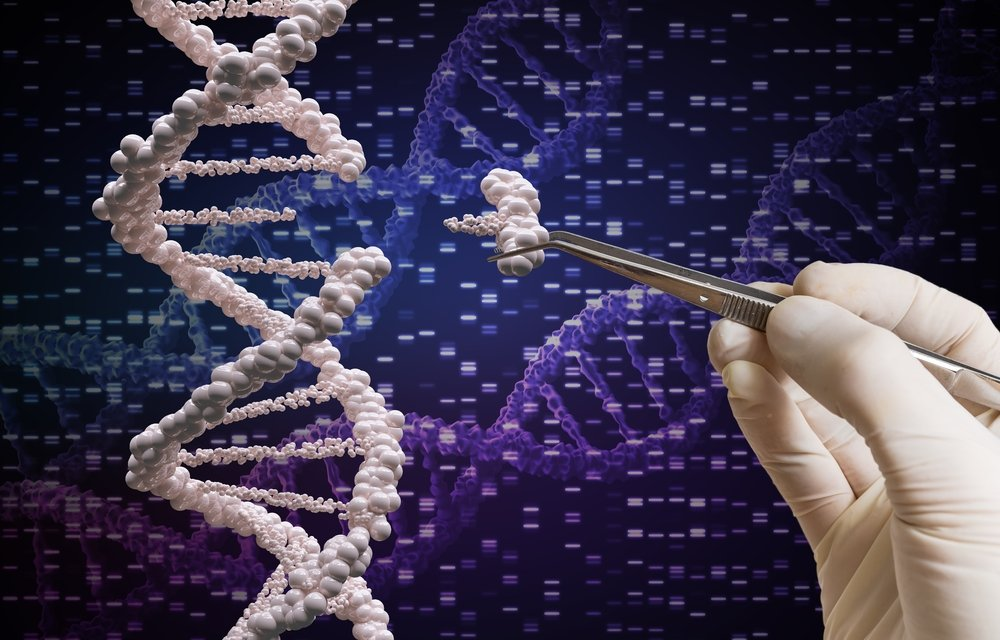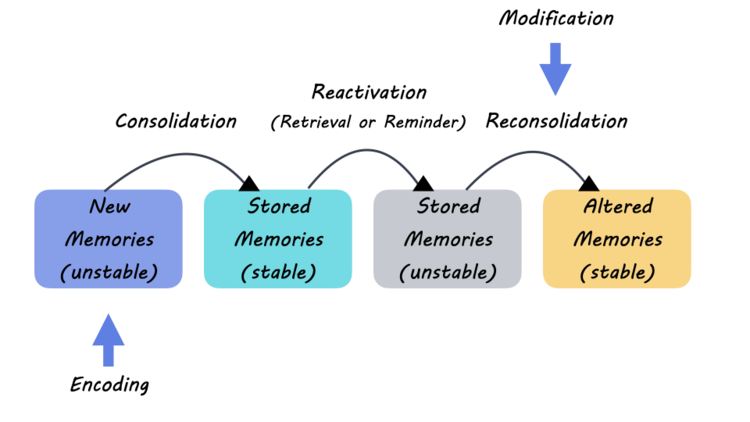Gene editing advances are revolutionizing the field of medicine and science, offering the promise of unprecedented solutions to genetic diseases that have long eluded conventional therapies. Among these innovations are techniques such as base editing and prime editing, which enhance the existing CRISPR technology by permitting more precise alterations to the genetic code. These refined methods allow scientists to correct single-letter mutations in DNA, presenting new hope for patients suffering from complex genetic disorders. With hundreds of millions worldwide affected by these conditions, the impact of such breakthroughs is monumental, as they pave the way for gene therapy that could potentially rewrite the future of health care. As researchers continue to explore these cutting-edge techniques, the potential for developing tailored treatments grows, transforming the landscape of genetic disease management.
Recent breakthroughs in genetic modification techniques signify a pivotal moment in the fight against hereditary disorders. The emergence of advanced editing methods, like those derived from CRISPR systems, marks a significant step forward in our ability to tackle genetic illnesses. Tools such as precision base editing and innovative prime editing offer refined approaches that target specific areas of DNA for correction, rather than broader, less accurate alterations. This evolution in gene manipulation techniques not only enhances the accuracy of genetic repairs but also opens new avenues for developing effective gene therapies. The implications of these technologies extend far into the future, suggesting a transformative shift in how we understand and treat inherited health conditions.
The Rise of Base Editing in Gene Therapy
Base editing has emerged as a revolutionary technique in gene therapy, providing a refined method for correcting genetic mutations that cause diseases. Unlike traditional CRISPR technology, which relies on cutting DNA strands, base editing alters the individual nucleotide bases directly. This innovative approach makes it possible to convert one DNA base into another without causing double-strand breaks, thereby reducing potential off-target effects and enhancing safety in therapeutic applications. As researchers like David Liu continue to explore the capabilities of base editing, the implications for treating genetic diseases look increasingly promising.
The first successful clinical application of base editing was notably illustrated in the case of Alyssa Tapley, a young leukemia patient whose treatment marked a watershed moment in medical science. This therapy not only emphasized the potential of base editing to change lives but also showcased its ability to directly tackle mutations responsible for various genetic disorders. Continued advancements in this area are essential, as they could lead to the development of targeted therapies that offer hope to millions suffering from genetic diseases.
Prime Editing: A New Era in Genetic Correction
Prime editing represents an even more advanced method in the arsenal of gene editing technologies. This technique allows for precise alterations in the genetic code by using a programmable ‘search and replace’ strategy akin to a word processor. By enabling editing at the single-nucleotide level without causing the problems associated with cutting DNA, prime editing enhances the versatility and accuracy of genetic modifications. Researchers are excited about its potential applications, which could address a wider array of genetic disorders than base editing alone.
Studies are now underway to assess the effectiveness of prime editing in clinical settings, with expectations that it will assist in correcting a range of genetic diseases caused by various mutations. Its capability to introduce, delete, or replace sequences in the genome positions prime editing as a potential gamechanger in the field of gene therapy. As we broaden our understanding of this technique, we may uncover transformative solutions for conditions previously deemed untreatable, showcasing the evolution of gene editing technology.
CRISPR Technology: The Foundation of Modern Gene Editing
CRISPR technology has fundamentally altered the landscape of genetics, serving as the groundwork upon which many current gene editing advancements are built. Initially discovered as a bacterial immune system, CRISPR’s ability to target and cut specific DNA sequences has opened doors for innovative applications in both research and medicine. As scientists like David Liu have extended the capabilities of CRISPR with methods such as base editing and prime editing, the technology continues to play a pivotal role in the potential treatment of genetic diseases.
The development of CRISPR-based tools has enabled researchers to explore numerous therapeutic avenues for combating genetic disorders. The progression from CRISPR to more refined techniques exemplifies the dynamic nature of genetic research, highlighting how foundational discoveries can lead to transformative practices in healthcare. With ongoing investments in CRISPR research and its derivatives, the future of gene editing appears bright, promising new solutions for chronic conditions affecting millions around the globe.
Addressing Genetic Diseases: Innovations in Treatment
Genetic diseases affect hundreds of millions worldwide, driving the urgent need for innovative treatments. Advances in gene editing technologies, particularly base editing and prime editing, provide new hope for patients with conditions such as sickle cell anemia and muscular dystrophy. These approaches enable precise corrections of the underlying genetic defects, potentially reversing the course of these debilitating diseases. As research expands, tracking the success rates of these therapies will be crucial in understanding their long-term efficacy and safety.
Ongoing clinical trials are essential to validate the effectiveness of these novel gene therapy techniques. Early results show promise, with some patients experiencing relief from symptoms and improved quality of life. As researchers collect more data, the light of innovation around gene therapy shines brighter, fueled by the commitment of scientists and organizations to push the boundaries of what is possible in treating genetic diseases.
The Role of Basic Science in Gene Editing Advances
The significance of basic science in the realm of gene editing cannot be overstated. Fundamental research lays the groundwork for breakthroughs like CRISPR technology, base editing, and prime editing. Understanding the underlying mechanisms of DNA and its interactions has allowed scientists to develop sophisticated tools that can precisely alter the genetic makeup of living organisms. The journey from laboratory discoveries to clinical applications exemplifies how basic science can lead to significant advancements in medical innovation.
As noted by David Liu, the journey of scientific discovery often begins with curiosity-driven research, much like the initial investigations into CRISPR. This exploration into the nature of clustered regularly interspaced short palindromic repeats ultimately led to tools that may redefine modern medicine. Sustained investment in basic science is vital for the continuation of such progress, ensuring that future generations of scientists have the resources and support needed to explore the unknown and further the field of gene therapy.
The Future of Gene Editing: Emerging Trends and Challenges
Looking ahead, the future of gene editing is marked by exciting potential but also significant challenges. As technologies like base editing and prime editing evolve, ethical considerations surrounding their use become increasingly important. As researchers strive to push the boundaries of what’s possible, maintaining transparency and adhering to ethical standards in the development and application of these technologies will be crucial. Conversations about genetic privacy and the potential for misuse will become prominent as these tools become widely accessible.
Moreover, there is a need for a robust regulatory framework that can keep pace with the rapid advancements in gene editing technologies. Developing guidelines that ensure the safety and efficacy of therapies targeting genetic diseases while fostering innovation is paramount. The collaboration between scientists, policymakers, and the public will play a vital role in shaping a future where gene editing can be harnessed responsibly, ultimately leading to transformative impact on healthcare.
Patient Perspectives: The Impact of Gene Editing on Lives
The real-world impact of gene editing technologies is perhaps best illustrated through the stories of patients who have benefited from these advancements. Alyssa Tapley’s experience is a testament to how innovative gene therapies can restore hope and improve quality of life for those grappling with severe health issues. Her active engagement in her treatment journey highlights the transformative power of gene editing, not just in addressing genetic diseases but in enhancing the overall well-being of patients.
As success stories emerge from clinical trials, they underscore the potential of gene editing to offer unprecedented solutions for previously intractable conditions. These narratives not only inspire further research but also motivate scientists and organizations to continue pursuing excellence in the development of gene therapies. By prioritizing the needs and voices of patients, the gene editing community can ensure that innovations remain patient-centered and effective.
The Collaboration of Science and Technology in Gene Editing
The intersection of science and technology is a driving force behind recent advancements in gene editing. Cutting-edge tools and methodologies play a critical role in the efficiency and effectiveness of developments like base editing and prime editing. By leveraging sophisticated computational models, laboratories can design experiments that enhance the precision of genetic modifications, resulting in improved therapeutic outcomes.
Collaboration between interdisciplinary teams—comprising biologists, bioinformaticians, and engineers—further accelerates progress in gene editing. This teamwork fosters an environment where diverse perspectives converge to drive groundbreaking innovations. As the field continues to advance, fostering collaborative initiatives across specialties will remain crucial for developing the next generation of gene therapy solutions.
Regulatory Pathways for Gene Editing Technologies
With the rapid development of gene editing technologies, regulatory oversight has become a critical aspect of their implementation in clinical settings. As techniques like base editing and prime editing gain traction, it’s essential to establish robust pathways that ensure safety and efficacy for patients. Regulatory frameworks must evolve alongside scientific advancements to keep pace with innovations while providing necessary safeguards.
Engagement with regulatory bodies will be crucial for researchers seeking to translate their findings into practical therapies. By fostering clear communication and collaboration with regulators, scientists can navigate the complex landscape of approval processes, ultimately leading to the responsible adoption of gene editing technologies in medicine. Striking the right balance between innovation and regulation will be key to harnessing the full potential of gene editing in addressing genetic diseases.
Frequently Asked Questions
What are the latest advances in gene editing technologies such as base editing and prime editing?
Recent advances in gene editing technologies include significant developments in base editing and prime editing. Base editing allows for precise modifications of the DNA’s nucleotide bases without double-strand breaks, making it suitable for correcting common mutations associated with genetic diseases. Prime editing, on the other hand, functions like a word processor that can search and replace defective DNA segments, offering a versatile solution for a broader range of genetic mutations.
How does gene therapy utilize gene editing advances to combat genetic diseases?
Gene therapy leverages advances in gene editing, such as CRISPR technology, base editing, and prime editing, to rectify genetic flaws responsible for diseases. By directly altering the genetic sequence, these advanced techniques aim to provide long-lasting solutions and potentially cure conditions that were previously deemed untreatable, significantly improving patient outcomes.
What role does CRISPR technology play in the evolution of gene editing advances?
CRISPR technology serves as the foundation for many gene editing advances. Initially discovered as a bacterial immune response, CRISPR-Cas9 has paved the way for more refined techniques like base editing and prime editing. These newer methods enhance the precision and effectiveness of genetic modifications, allowing researchers to tackle a wider array of genetic diseases with greater accuracy.
How is base editing changing the landscape of gene editing for genetic diseases?
Base editing is transforming the field of gene editing by providing a method to make precise single-nucleotide changes in DNA without causing double-strand breaks. This technique is particularly effective for correcting common mutations that lead to genetic diseases, enhancing the potential for successful therapies and reducing the risks associated with traditional gene editing methods.
What is the significance of prime editing in treating genetic disorders?
Prime editing holds significant potential in treating genetic disorders because it enables targeted insertions, deletions, and base substitutions with minimal risk of unintended mutations. This versatility makes it a powerful tool for addressing complex genetic issues, offering a safer and more precise approach compared to previous gene editing technologies.
Can advancements in gene editing like base editing and prime editing eliminate genetic diseases?
While advancements in gene editing, particularly base editing and prime editing, show remarkable promise in treating genetic diseases, it is too early to claim they can completely eliminate such diseases. Early clinical trials have demonstrated success in alleviating symptoms and reducing reliance on medications, suggesting a potential shift towards curing certain genetic disorders.
What is the future of gene editing advances in medicine?
The future of gene editing advances in medicine looks bright, with ongoing research and clinical trials employing base editing and prime editing to treat a variety of genetic diseases. As these technologies become more refined and their safety profiles established, they are likely to revolutionize therapeutic options, enabling permanent corrections of genetic mutations and more effective treatments.
How are researchers ensuring the safety of new gene editing techniques in clinical settings?
Researchers are prioritizing safety in new gene editing techniques by conducting rigorous preclinical studies and clinical trials. These studies aim to assess the precision of edits made by base and prime editing, examine their long-term effects on patients, and ensure that there are no unintended consequences, thereby striving to make the uses of gene editing as safe as possible.
| Key Points |
|---|
| Alyssa Tapley, at 13, was treated for T-cell leukemia using base editing, the first known therapy of its kind. |
| David Liu, a key scientist in gene editing, emphasizes the responsibility in ensuring safety and efficacy of these technologies. |
| Base editing differs from CRISPR-Cas9 by focusing on changing specific nucleotide bases rather than cutting the DNA. |
| Prime editing, another method developed by Liu’s team, allows precise edits akin to a word processor for DNA. |
| Research has led to at least 18 clinical trials for base and prime editing, treating various genetic diseases. |
| Liu connects his work to basic science, highlighting its role in the discovery and application of CRISPR technology. |
| There is caution against calling these treatments ‘cures’ until sufficient evidence of long-term effectiveness is established. |
Summary
Gene editing advances are revolutionizing the treatment of genetic diseases. Breakthroughs in technologies like base editing and prime editing, pioneered by researchers such as David Liu, are providing new hope for patients suffering from previously untreatable conditions. These innovations are not only changing the landscape of medical science, but also laying the essential groundwork for future research and ethical considerations in genetic manipulation.









